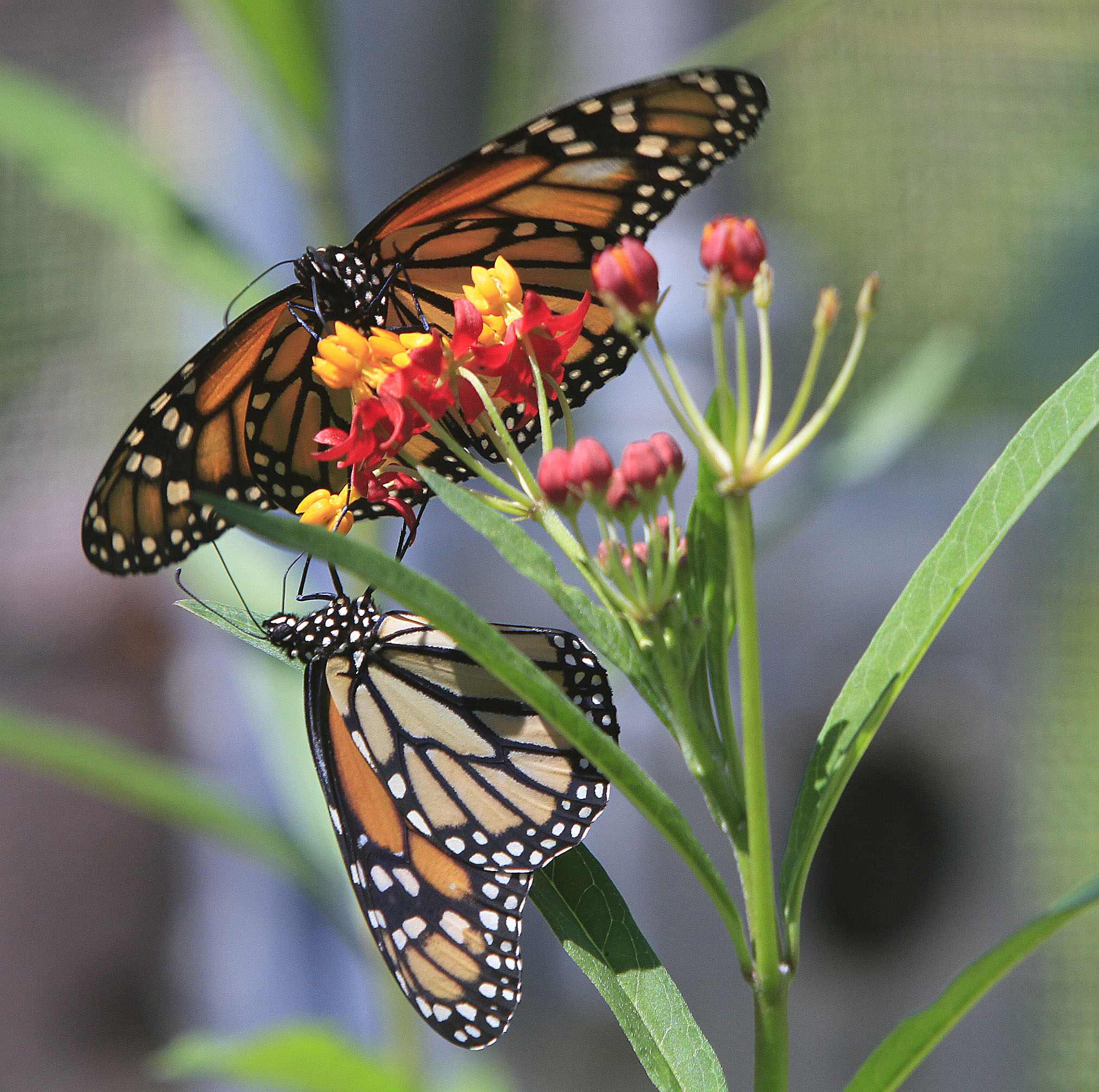Drought threatens Monarch butterfly population

Monarch butterflies alight on a flower Monday in Lawrence. The butterflies are heading south to their winter habitat in Mexico. They stop in the Lawrence area, most notably in the wetlands, to refuel for their journey.
Butterfly open house and tagging events planned
Monarch butterflies will be featured at two upcoming Lawrence events.
Kansas University’s Monarch Watch conservation program will host its fall open house from 8 a.m. to 2 p.m. Saturday at Foley Hall on KU’s West Campus.
The event will include tours of a butterfly garden that is expected to attract about 20 different varieties of butterflies. A honey bee observation hive, insect displays and monarch tagging demonstrations also are scheduled. Children attending the event will receive a Monarch pupa — the cocoon that eventually hatches a butterfly — while supplies last.
Monarch Watch and the Jayhawk Audubon Society will sponsor a field day from 7:30 a.m. to 11:30 a.m. Sept. 15 at the Baker Wetlands near 31st and Haskell.
Volunteers will be shown how to safely net monarch butterflies and tag them for further study.
The event is open to all ages. Nets will be provided, but organizers ask people who have butterfly nets to bring them. The event is organized so participants can check in or leave anytime during the 7:30 to 11:30 time period.
Prime monarch watching season is almost upon the Lawrence area.
The problem is, the monarch butterflies probably won’t be in their prime.
“Everything just does poorly in a drought,” said Chip Taylor, director of the Kansas University-based Monarch Watch conservation group.
Population totals in Mexico, where the monarchs winter for the season, are expected to be about 50 percent less than their historical average, Taylor said.
But area residents hoping to get a glimpse of the colorful butterflies still will have their chances this season. Taylor is estimating the monarchs will start arriving in the Douglas County area Monday. The prime viewing season is expected to last until about Sept. 27. The monarchs likely will be gone from the area after the first week of October.
The Baker Wetlands near 31st and Haskell once again will be the most likely place to see large amounts of monarchs. The Jayhawk Audubon Society and Monarch Watch will sponsor their annual field day, where volunteers will tag monarchs so they can be tracked upon their arrival in Mexico. The event is set for 7:30 a.m. to 11:30 a.m. Sept. 15 at the wetlands.
“Even when the population has been down at other places, we often have done well at the wetlands,” Taylor said.
The wetlands serve as a fueling station for the monarchs, which take nectar from the wetlands’ flowers to give them energy for their trek.
Taylor said the drought has hurt the number of flowers at the wetlands and across the Midwest. In particular, the loss of milkweed has a detrimental impact on monarch populations because the butterflies lay their eggs on the plants.
The drought, however, isn’t the only cause of the declining milkweed populations. Taylor said the use of genetically engineered corn and soybean crops that allow farmers to more aggressively spray for weeds significantly has hurt the milkweed numbers. Couple that with an increase in the amount of grasslands being converted to corn production, and Taylor said the loss of habitat is the No. 1 issue facing monarch populations.
“We’re not leaning on the farmers, though,” Taylor said. “We understand they have to make a living. But we do have a lot of habitat out there we can be making better use of.”
Monarch Watch leaders have been urging homeowners to plant more milkweed and other butterfly-friendly plants in their home gardens. But they also have been making a push with state transportation departments across the country to better manage medians and shoulders, which often can serve as good habitat for butterflies and other pollinators.
“We should be doing a little less mowing and a little less use of herbicides in those areas,” Taylor said. “We’re making some progress, but it is slow. We are battling inertia. People have done it this way forever and ever.”
Taylor’s group and volunteers continue to push for change, though, because the health of monarchs they say, is an early warning of how pollinating insects in general are holding up to climate change.
“The thing is how well we protect our habitat,” Taylor said. “If we can protect our habitat, this migration will continue.”
That would please butterfly watchers everywhere. The migration, which stretches thousands of miles from Canada to Mexico, produces a common reaction from people who take time to learn about it, Taylor said.
“It stops and makes you realize there are some pretty amazing things that are happening out there in nature,” Taylor said.






